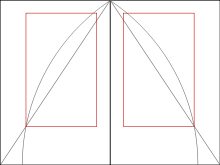 For many years there is a “war” going on about the legibility of the sans serif fonts over serif fonts and vice versa and the right use of them inside a web page or article.
For many years there is a “war” going on about the legibility of the sans serif fonts over serif fonts and vice versa and the right use of them inside a web page or article.
Fonts
Through the years there were a lot of different opinions or suggestions indicating the superiority of the one type of fonts over the other in both legibility and an aesthetic level.
Introducing Serif and Sans Serif Fonts
An easy way to remember the difference between these two different types of fonts is that the Serif fonts have some ‘extra’ strokes at the edges of a character. Sans-Serif fonts don’t. Also, this extra detail in the characters is called “serif” while “sans” means “without” in French, so “sans-serif” means “without serif”. Here is an example of Times New Roman (Serif) and Arial (Sans-Serif):
Definitions
The criteria on which this conflict was based upon were the ability to recognize an individual letter or an entire word (Legibility) or larger blocks of text, paragraphs (Readability).
The Argument
In Favor of Serif
People who supported Serif fonts over the years have claimed a number of things in favor of this type of fonts. More specifically they claimed that Serif fonts:
- Guide the eye in order to better follow the horizontal flow of the text.
- Are constructed in a way that helps legibility by adding more space and by increasing the contrast between the characters.
- In reverse with Sans serif fonts do not cause fatigue to the reader.
Of course none of these claims ever proved to be true; on the contrary, studies have shown that all these claims are false:
- There is no horizontal flow of the eye in reading,
- There is no need for serifs in order to increase space between characters,
- There is absolutely no need of contrast in order to better identify a single letter (on the other hand, a single character is better recognized when in a word)
- There is no evidence nor a single relative scientific research what so ever, in order to prove that sans-serif fonts cause fatigue.
In Favor of Sans-Serif
On the other hand, people who are in favor of sans-serif fonts claim that Sans-Serif fonts are:
- Better in smaller sizes
- Better when used in a webpage
- More legible due to the simplicity of the characters shape
Again all these claims are without a scientific proof.
Common Combinations Used in the Past
Serif Titles – Sans Serif Body or the other way around?
A common opinion about this issue until this day is the use of sans-serif fonts in the title of an article and the use of serif fonts in the body of the article or the other way around. It was said that using this technique could help readability. Many well-known websites use this technique nowadays too.
Again… this is only a speculation.
Conclusion
After all those decades of research, until this day, there is no scientific proof in order to favor one type of fonts over the other. There is not a specific pattern or a technique to follow. Actually there is no war at all! In my opinion it’s just a matter of taste and if you follow my advice…let it be this way.
There is no reason to try to prove which font type is better. Just use the ones that make you feel better!
Read more about historical fonts we are still using today here.

